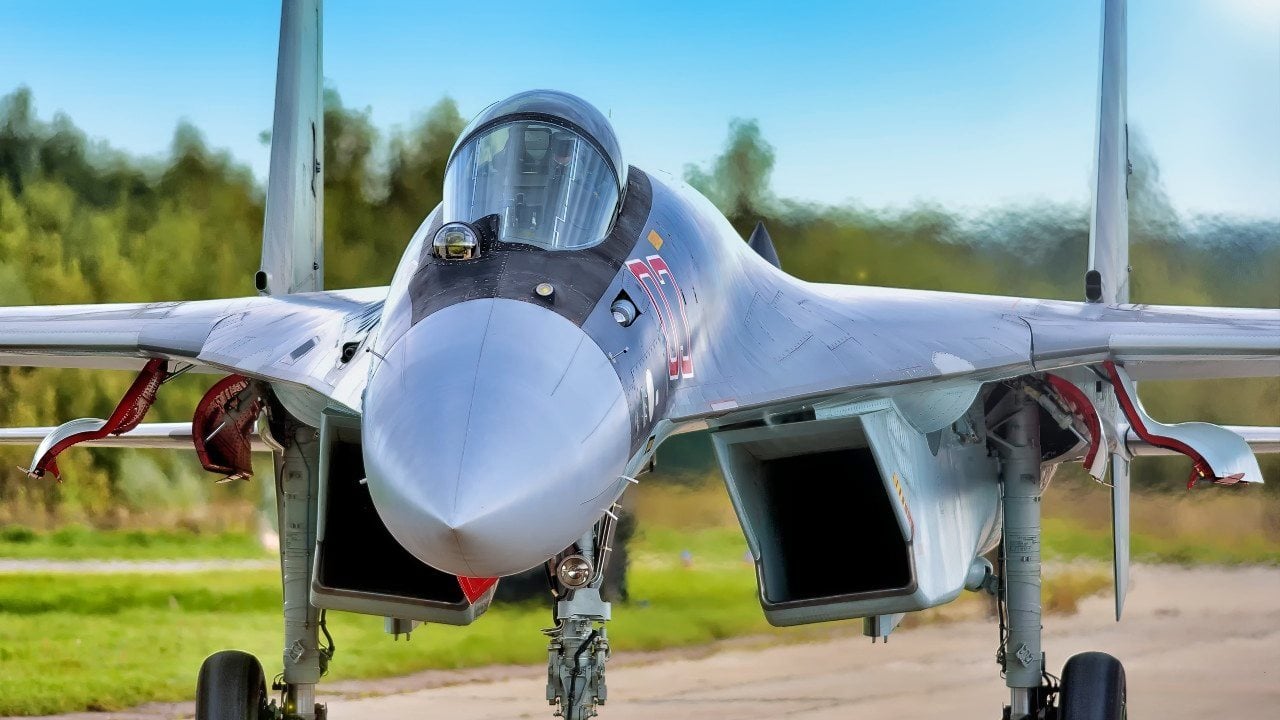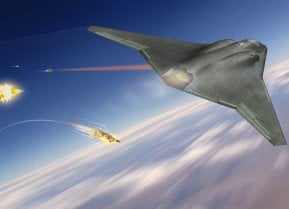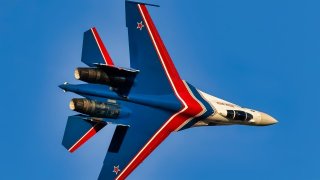Russia's Su-35 Fighter 'Dropped Like Flies' in the Skies Above Ukraine
In the Ukraine conflict, Russia’s Su-35—a highly maneuverable “4++ generation” fighter—has faced stiff resistance from Ukrainian forces equipped with Western-supplied and Soviet-era defense systems, including F-16s.
What You Need to Know: In the Ukraine conflict, Russia’s Su-35—a highly maneuverable “4++ generation” fighter—has faced stiff resistance from Ukrainian forces equipped with Western-supplied and Soviet-era defense systems, including F-16s.

-Despite its superior capabilities compared to its predecessor, the Su-27, the Su-35’s combat record is mixed, revealing both its strengths and limitations in a modern warfare environment.
-The experience highlights areas for improvement in Russian aerial tactics and missile technology. The Su-35’s lessons in Ukraine may prove valuable as Russia looks to develop more advanced airframes like the Su-57.
-Ultimately, performance in battle remains the deciding factor in air power efficacy.
Russia’s Su-35 vs. Ukraine’s Air Defenses: A Modern Combat Test
High above the skies of Ukraine, a new chapter in aerial combat is being written. The Su-35, Russia’s most powerful frontline warplane, is squaring off against a combination of robust anti-aircraft defenses and the F-16 Fighting Falcon. The Russians are pitting their Su-35 fleet against the hodgepodge of Western-supplied systems and Soviet-era platforms that defines Ukraine’s armed forces.
The stakes are high, and the outcome could have far-reaching implications for the future of air combat.
The Su-35, developed by the legendary Sukhoi Design Bureau, is a single-seat fighter jet designed as a highly maneuverable and versatile craft.
It is a significant evolution of the Cold War-era Su-27 “Flanker,” which is a dedicated air superiority heavy fighter. The Su-35 is more advanced than the old Su-27. But it is not the top-of-the-line Russian warplane. Its designers often describe it as a “Fourth Generation ++” system.

Interestingly, the Su-35 is merely a placeholder warplane until the true fifth-generation warbird, the Su-57, can meet production demands.
Despite being designed for exactly the kind of war that Russia is currently fighting, the Su-35’s combat record is mixed.
It is lethal, and no one should underestimate it as a platform. But its overall experience in Ukraine is mixed. In fact, the turbulent showing of the Su-35 in the Ukraine War led many observers in the West to even question whether Russia is capable of competing with Western forces to produce advanced warplanes.
Then again, the Russians are doing just fine on the battlefield against Ukraine. Soon, the war will be over. Russia will have won. So, Western observers mocking Russia for being unable to field truly fifth-generation warplanes, should reconsider their hectoring.

After all, it doesn’t matter how ugly or old your systems are. If you can defeat a modern military, that’s the main point.
Just ask the Taliban.
Even the losses the Su-35 has thus far sustained in Ukraine are valuable lessons for Sukhoi when building replacements and working on the next generation of warplanes meant to replace the Su-35.
The experiences of the Su-35 also underscore for the Russian air force their need to enhance training and tactics for a modern combat setting. What’s more, the Su-35’s experience in Ukraine has highlighted the importance of advanced missile technology in modern air combat.
The Su-35’s debut in Ukraine has not yielded the kind of expansive success that its planners envisioned. But it has not been a total failure. The plane has demonstrated its capabilities as a modern fighter.
About the Author
Brandon J. Weichert, a National Interest national security analyst, is a former Congressional staffer and geopolitical analyst who is a contributor at The Washington Times, the Asia Times, and The-Pipeline. He is the author of Winning Space: How America Remains a Superpower, Biohacked: China’s Race to Control Life, and The Shadow War: Iran’s Quest for Supremacy. His next book, A Disaster of Our Own Making: How the West Lost Ukraine, is due October 22 from Encounter Books. Weichert can be followed via Twitter @WeTheBrandon.
All images are Creative Commons or Shutterstock.


